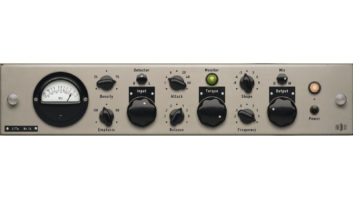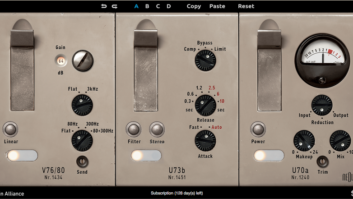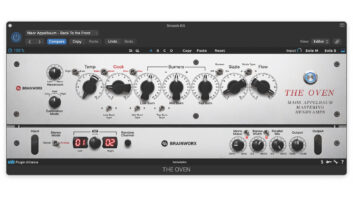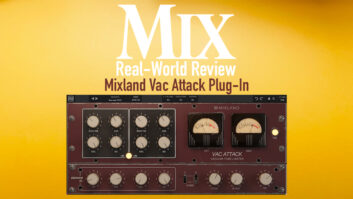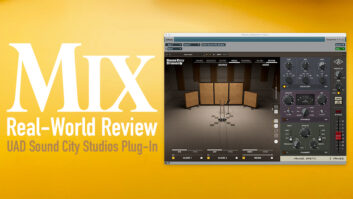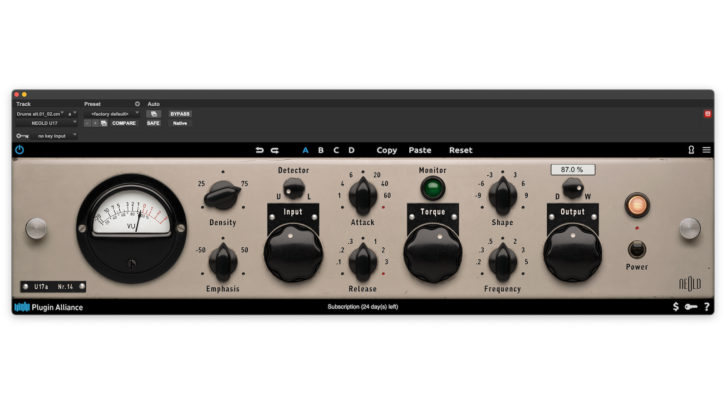
| MIX VERDICT |
| “The U17 would make a versatile addition to any plug-in compressor collection.” |
| COMPANY: Neold via Plugin Alliance PRODUCT: Plugin Alliance Neold U17 WEBSITE: www.neold.com PRICE: $249 PROS: • Improves most sources put through it. • Solid on organic sources like acoustic guitar and vocals. CONS: • Emulated diode-bridge compression circuit not quite transparent. |
Neold modeled the U17 plug-in (distributed by Plugin Alliance) from a 1954 broadcast compressor built by Allgemeine Telefon-Fabrik in Hamburg, Germany, which manufactured less than 40 of the units. Neold refers to it as “the Secret Compressor” and says it was “one of the rarest compressors ever built.” It featured a diode-bridge compressor section and a tube-and-transformer-based amplifier.
One of the advantages of digital emulations of hardware is that the developer can add features that weren’t on the original, providing extra functionality. Neold did just that with the U17. The most significant addition is the Density stage, which comes before the compression circuit. You can use it to add saturation and to reduce heavy transients before compression.
The higher you set the Density knob, the more saturation it creates. The Emphasis knob sets the frequency area for the saturation, allowing you to accentuate a particular frequency range.
Trident A-Range Dual-Discrete Mic Pre/EQ – A Real-World Review
The U17’s Input knob drives the compression circuit but is after the Density stage in the signal chain. The Torque knob functions like a combination of threshold and knee control. Low settings produce clean-sounding transients, whereas high ones squash them down more. You can adjust the Attack and Release manually, or set either or both to Auto mode.
The Frequency and Shape knobs adjust the sidechain frequency content. The former controls a tilt-style filter, and the latter lets you crossfade it from low-pass to flat to high-pass. You can solo the sidechain by pressing the Monitor button.
Interestingly, one of the factory presets, Lo-Fi Bass, keeps the Monitor solo engaged, outputting only sidechain signal. The Mix knob provides for parallel compression and saturation.
I tried the U17 on vocals, electric guitar and bass, acoustic guitar, resonator guitar, multitrack drums, drum loops, and on the master bus. I was able to improve all those sources with it.
The emulated diode-bridge compression circuit has its own sound and character that’s not as edgy as a FET compressor and has a warm and thick tone. I wouldn’t call it transparent, but I got great results on organic sources like acoustic guitar, and vocals and electronic ones like drum machine and synth bass.
Between its diode bridge sound and its Density circuit, the U17 would make a versatile addition to any plug-in compressor collection.
Like all of Plugin Alliance’s products, you can buy it individually or access it as part of a subscription bundle.
